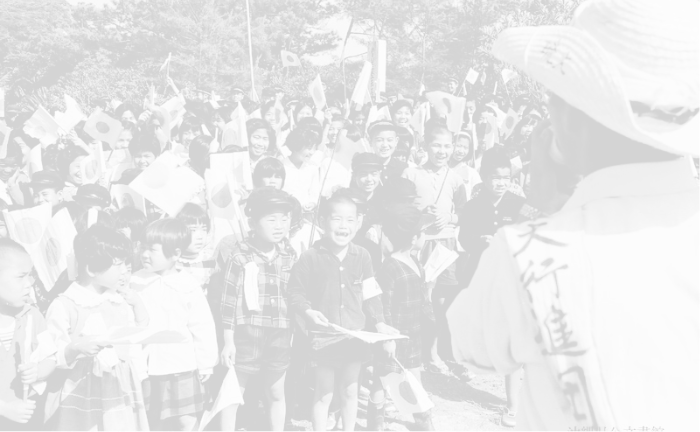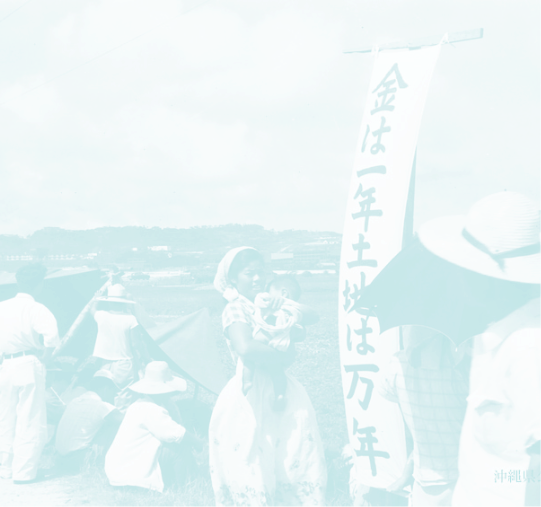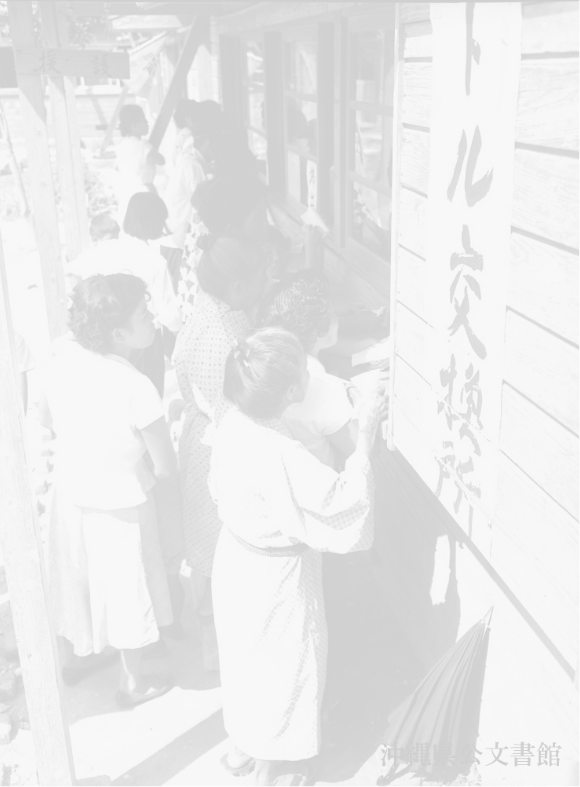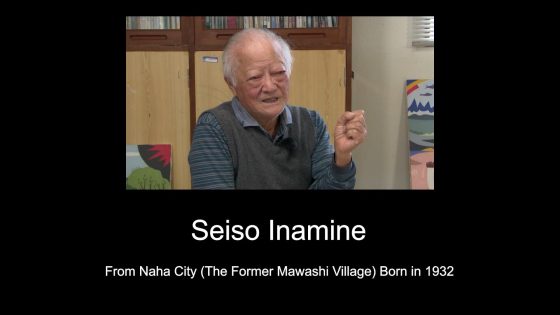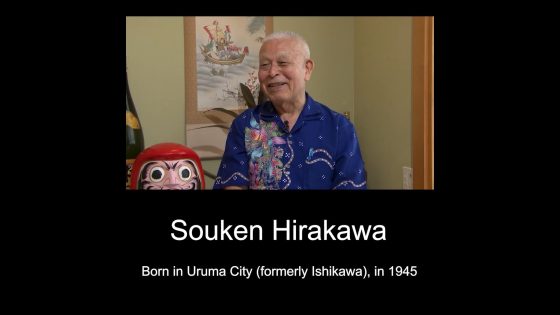
From Youth Group Activities to the Publishing Industry
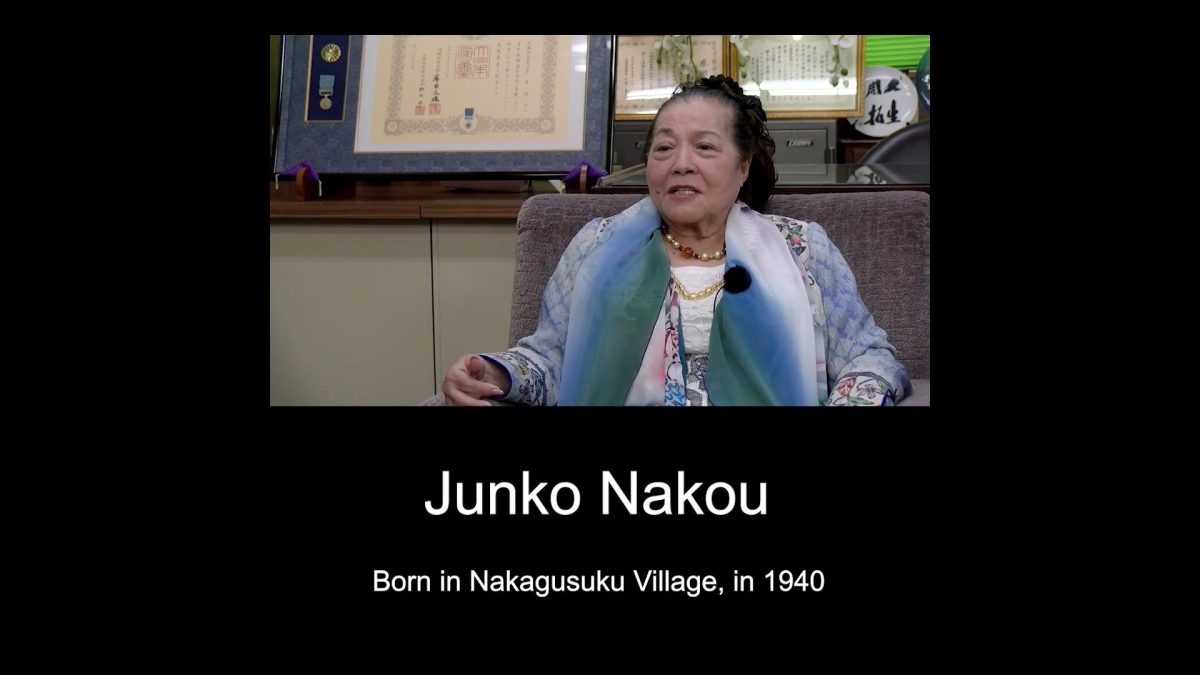

- Born in 1940
- Junko Nakou
Timeline
| 1940 |
Born in Nakagusuku Village.
|
|
|---|---|---|
| 1959 |
Mr. Shigou Ginoza founded Okinawa Jiji Publishing.
|
|
| 1962 |
Joined Okinawa Jiji Publishing and worked on the publication of the "Daily Kanji Table" and "Home Medicine”.
|
|
| 1963 |
In cooperation with the Naha Area Science Study Group, she published "Science Notebook" for elementary schools as the first teaching material.
|
|
| 1964 |
Published "History of the Okinawa Prefecture Reversion Movement" and produced a documentary film on the reversion movement.
|
|
|
Became vice president of the Okinawa Prefectural Youth Group Council. (served three terms).
|
||
| 1965 |
As a member of the Youth Group Council, she participated in a protest rally during Prime Minister Eisaku Sato's visit to Okinawa.
|
|
| 1967 |
As a member of the Youth Group Council, participated in protest demonstrations to stop the "Two laws on education personnel.
|
|
| 1968 |
Published "Our Okinawa" supplementary reading books for elementary and junior high schools nationwide.
|
|
| 1991 |
Became president of Okinawa Jiji Publishing and Okinawa Gakuhan.
|
Story
Brief biography of the witness
Having experienced war as a child, she has been involved in the peace movement since her youth. As co-owner of a publishing company, she has been involved in the publication of many educational materials and books related to the return to Japan in order to communicate current issues in Okinawa. Through the Youth Group Council activities, she has communicated the reality of Okinawa to the public and participated in problem-solving activities, serving as vice president of the Okinawa Youth Group Council. She has also held many managerial positions.
Thoughts on peace and youth group activities
From Experiencing War to the Peace Movement
I experienced war when I was five. Because of that experience, I had a strong desire for peace and actively participated in peace movements since I was a high school student.
Participating in Youth Group Activities
I was active in the Nakagusuku Village Youth Group Council and served as vice president. In addition, I was involved with the central organization. Various activities started from there, including peace marches.
Recruitment and pressure for spying
Recruitment for Spying
I graduated from a part-time high school, so I've been working since my first year of high school. I was a part-time first-generation student at Futenma High School. I graduated from school while working part-time at various shops. I never missed school, and I attended school from 6:00 p. m. to 10:00 p.m. and got home at 11:00 p. m. After returning home, I did household chores such as laundry. I also worked part-time as a housekeeper. When I was a second-year high school student, my older sister worked as a housekeeper for a military family. I also decided to ask my sister for help to get a part-time job at the base. At that time, if you had a home that hired Okinawans, the US military would issue you a pass. Even now, you need a pass to enter the base, but back then we were issued a pass that looked like a card. That's how I ended up working at a US military base when I was in my second year of high school. The passes had to be exchanged from time to time. Around that time, Okinawa was having issues with land in Isahama. There was great conflict between the US military and local residents over such issues at the time. Many people worked as spies. My father used to work at Nakagusuku Park. During that period, I was once called to Nakagusuku Park. I don’t remember their names, but I was called by three men, and asked, “Are you active in the Youth Group Movement and Red Flag?” I said, “yes, I am.” I've been campaigning since I was in high school. The men asked me, “Who among these people did what, where, and what did they do?” and, “Could you please give us at least a little bit of that information?” “If you cooperate, we can get your father or brother a good job. “They said things like that. As a second-year high school student, I was rebelling against that. I refused, and told them, “I can't do that. “I might be able to hide things better now, but back then I was naive. When I said that and refused, the men said, “Then we have no use for you anymore. “Then, when doing a pass exchange, I was told that my pass couldn’t be issued. I asked the reason why, and they told me that they had decided not to issue me a pass. So I lost my job. They simply said, “This is an order from above,” and, “You are not allowed to enter the base. “There was no explanation as to why. I wonder if this was meant as pressure on me. I was called out by three men and it was scary, but I didn't do anything wrong. It didn't feel that forced. I think I was approached because I had been to various places. There were a lot of stories like this about spies at the time.
To report on current affairs in Okinawa
Launching a Publishing Company to Convey the Realities of the Situation
When I was 19, I continued to participate in peace marches and other events after my Youth Group activities. I was just 19 years old when I left Nakagusuku Village and started my own company. I met members of the Okinawa Teachers' Association. Shinei Kyan, Choubyou Yara, and Shizuo Heshiki. I got to know these people and cooperated with them in many ways. I would get in a car and deliver posters to designated schools. The reason we named our company Okinawa Jiji Publishing was because we wanted to inform as many people as possible about current events in Okinawa. The purpose was to inform people about Okinawa's current situation. After that, there was a change in the list of Chinese characters for use. I think it was about 60 years ago. It just changed to a table of this size. This was also a one-of-a-kind item. A list of Chinese characters was required at every school. I went to schools and asked the principal to help me advertise. At that time, they gathered the children in the playground and held morning assemblies. This was done outside instead of in the classroom like it is now. At that time, I received permission to sell. Back then, the teachers accepted us so kindly. They helped with gathering the students. So I stood on the platform, and spread out the Chinese character chart and promoted it.
Encounters with the Okinawa Teachers Association
While creating something that could be used in schools in an era when there were no teaching materials. The thing that had the biggest impact on the company was meeting people from the Okinawa Teachers Association. I encountered people like Osamu Ohshima, Shizuo Heshiki, Hiroaki Fukuchi, and Shinei Kyan. Even when creating teaching materials for Chinese characters, I asked for supervision, and teachers such as Koshin Nakayama, who later became the head of the Ryukyu Government's Education Bureau, helped me in many ways. Because of this, I gradually started making teaching materials, such as music notebooks edited by the Okinawa Teachers Association. The first study notebook I created was a science notebook. The Okinawa Teachers Association had a science research group, so we published science study notes for grades 4, 5, and 6 of elementary school. After that, we called on various study groups to create teaching materials, gathered teachers from social studies clubs, had them edit the social studies teaching materials, and gradually developed more teaching materials, one by one. In social studies, we created teaching materials on the history of Okinawa for second-year students in history classes in junior high schools.
Involvement with the Reversion Movement
The number of teaching materials increased one by one, and ultimately reached a considerable number. This included a variety of teaching materials. The publication of teaching materials was all done in partnership with the faculty association's research group. This method has been passed down to this day. The process leading up to that point was also related to peace activities at the time. At that time, various activities were being carried out centering on the Okinawa Prefecture Council for Reversion to the Home Country (Fukkikyo), but the Fukkikyo and the Teachers Association could not produce “The History of the Okinawa Prefecture Reversion Movement. “Therefore, Okinawa Jiji Publishing was contracted to do all the editing for publication. The manuscript fee wasn't that much, but we also paid for it and helped the Fukkikyo. At that time, Shinei Kyan was the chairman of the Fukkikyo, and Choubyou Yara was the chief administrator. Through the connection with the Fukkikyo, we also met Souken Furugen. He went around the country with me and sold “The History of the Okinawa Prefecture Reversion Movement. “After that, through introductions from various people, I also made Jun Urasaki's book, “The Disappeared Okinawa Prefecture” (1965), and a film about the land struggle on Ie Island. Shoukou Ahagon was from Ie Island. Through an introduction, I ended up making a movie with him, and we went to Ie Island many times. I made various films centering around him.
Publishing Textbooks on Okinawa for Mainland Japan
This book is not sold in Okinawa and is not used in Okinawan schools. This was created for mainland Japan and was mainly created by the Okinawa Teachers Association at the time. In Okinawa at that time, regulations on publishing were very strict, and the issue of this kind of supplementary reader was the responsibility of the Board of Education. There was some pressure under the US administration. This book was edited by teachers from the Okinawa Teachers Association. This book is great because it contains a lot of information about the then-current situation in Okinawa. It also introduces Okinawa's traditional culture and bingata dyeing. The book is very informative even if you read it now. I think it can be useful for people who don't know about Okinawa. It also discusses peace issues, including newspaper clippings. The content is very rich, including information on military sites and bases in Okinawa. “This Okinawa of Ours” has slightly more challenging content aimed at junior high school students. “Our Okinawa” is aimed at elementary school students.
Various Pressures
They contain photos of Shureimon Gate and the town, bananas in Okinawa, and the base. These books were first printed by the Kagoshima Teachers Association. They were printed in Kagoshima. They were sent to schools all over the country by the Kagoshima Teachers Association. I think we sold over 10,000 copies because schools all around Japan used them as teaching materials.
Activities and various experiences in and outside of Okinawa
Feeling the Gap between Okinawa and Mainland Japan during the Reversion Movement
I was involved in the reversion movement within the Youth Group, so I participated in various organization activities. In particular, the Okinawa Prefectural Youth Group Council had quite a lot of interaction with mainland Japan, so when I was young, around 25 or 26,I had the opportunity to go to Toyama and Ishikawa to report on the actual situation in Okinawa. The Okinawa Youth Group divided into groups of 4 to 5 people and went to each region. In Toyama, I was able to get closer to the local people and carry out activities. In Ishikawa, the father of former Prime Minister Yoshiro Mori was the mayor of Neagari Town, and they treated us well. When we held an exchange group activity at a community center, we would hear people saying things like, “Today, indigenous people are coming from Okinawa, but I wonder if they can understand Japanese language. ”“I wonder what kind of people they are. ” “I wonder what indigenous people are like.” We were just waiting in the waiting room. The people there didn't even know where Okinawa was. Most people didn't even know that it was a prefecture of Japan. The same thing happened in Ishikawa and Toyama. Their interest in us was because the indigenous people of Okinawa are coming. “What language do they speak? How do they dress? How do they talk?” When we heard things like that, we in the Okinawa Youth Group were still young, so we were angry. I felt really pathetic. So, we took advantage of the opportunity to interact, and said, “We are no different from you.” “We are the same. We are also Japanese. ”“Even though Okinawa is currently separated from Japan, we are no different from you.” I expressed about the current situation of Okinawa like this. In mainland Japan, most people didn't know about Okinawa. Little was known about where Okinawa was or what was going on. Okinawa was the only island that was separated from the mainland, not only the government but entirely, by the separation of powers. Because of this, I continued to work together with the members of the Youth Group and with Anichi Nakamoto, who was a bit more experienced.
Participating in the Reversion Movement
During the reversion movement in Okinawa, we continued to engage in peace activities while staying at the community center with everyone. The people who worked together later became prominent within the Ryukyu government. For example, Akira Nakane and Satoru Nakasone. Many people become great people later in life. The fact that we were able to work mainly with people in the Chubu area and interact with activists in the Chubu area did not lead to much work with the publication or the school. However, I have many memories of our activities back then. The Japan Council against Atomic and Hydrogen Bombs frequently held such activities regarding reversion marches demanding a return to Japan. I participated in such marches and social gatherings. It was a great learning experience for me to interact with the local community.
At the site of various protest rallies
The Protest Rally against Prime Minister Sato (August 1965)
Opposite the Tokyu Hotel [in Ameku, Naha City] was a plaza. There was an open space with grass that looked like a small mountain. It didn’t feel like the current Shintoshin area. We used that plaza to hold a protest rally against Prime Minister Sato as the Youth Group. At that time, Professor Fujita from Rissho University was in Okinawa to give a lecture to the Youth Group or something, and he attended the rally. Since we had no experience with protest rallies, we didn't know what would happen next. So normally we would disperse after the lecture, but everyone was sitting there calmly. To prevent Prime Minister Sato from proceeding any further, everyone was doing a sit-in in front of the Tokyu Hotel. Professor Fujita seemed to have had a lot of experience with protest rallies on the mainland. When the riot police rushed in and tried to crack down on everyone, Professor Fujita immediately called out “Run away!” So we were able to escape quickly and were lucky not to be captured, but a large number of people were captured by riot police. At protest rallies in Okinawa, there were also clashes between demonstrators and riot police in front of the Tokyu Hotel and in front of the Legislature during the struggle to block two laws on education personnel. Many people opposed to the laws were in a crowd in front of the Legislature. We also participated there as a youth group. Social movements at that time were mainly centered around youth groups. There was the Okinawa Prefectural Youth Group Association, and most of the activities were carried out mainly by the Youth Group. At that time, we too were protesting in front of the Legislature against these two controversial laws. At that time, we did a lot of protest activities such as hunger strikes. I always participated in sit-ins in front of the Ryukyu government. I was also at the protest site during the struggle to stop two controversial laws. At the time, I was the vice president of the Okinawa Prefectural Youth Association. I participated because if we didn't do it, who would? In addition to the Teachers Association, other democratic groups participated in activities aimed at drawing attention to the real situation in Okinawa and changing Okinawa. At that time, there were not many organizations such as unions, so various activities were carried out mainly by Youth Groups.
Message to Younger Generations
Message to Younger Generations
To understand things, instead of looking at things from above from your own perspective, you need to stand in the same position as everyone else and take a step back. I think situations and things look better when you look at people. I don't think you can do anything if you hold people down from above. The only way to do that is to change yourself. You have to lower yourself from your position and look at it from the same perspective. If you look at things from above, it will create pressure. No matter how much you say things like “thank you,” or smile or shake hands, you’ll never run out. It is important to value people while valuing these things. I think the most important thing is people. And in that sense, you can spend your whole life paying back what you’ve received.
Memories of Mr. Ginoza, Co-Owner of the Company
Mr. Ginoza was a very strict but cautious person. For work things, if he had to negotiate something with the teachers, he went to their homes every day, even early in the morning. He always persuaded others, and he didn't go on too many adventures, but instead, he would cautiously accumulate achievements, one little bit at a time. That company policy was also written by Ginoza.
“Awaken to yourself, encourage yourself, and be proud of yourself.”
